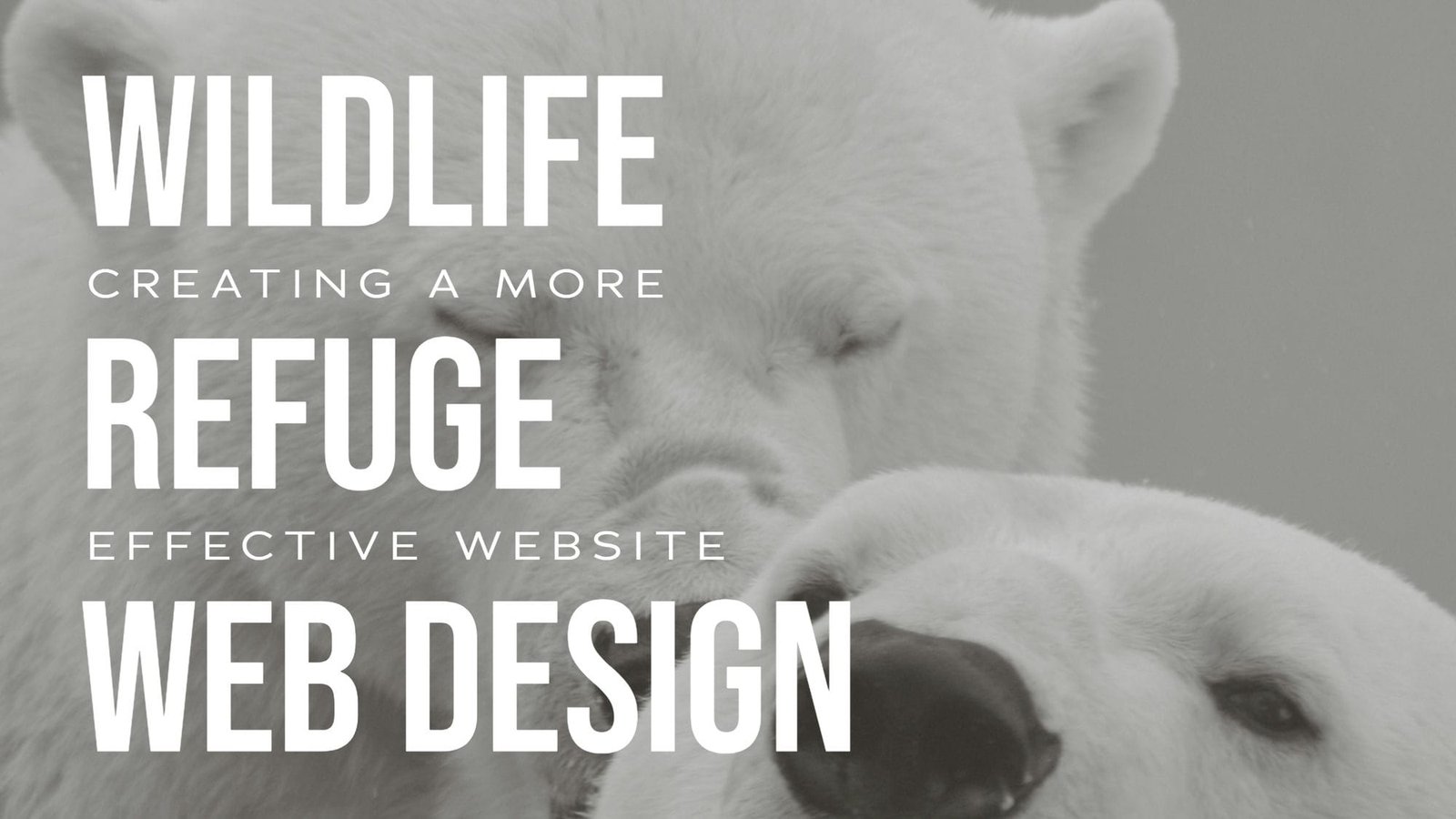
Wildlife refuges are an important part of our ecosystem. They provide a safe haven for animals that are in danger, and they also help to preserve our natural resources. As the steward of a wildlife refuge, it is important to make sure that your website is user-friendly and easy to navigate. In this blog post, we will discuss some tips for creating a more effective wildlife refuge website.
Tip #01: Make your refuge website easy to navigate
Your website should be easy to navigate, so that visitors can find the information they are looking for. Use clear and concise titles for your pages, and include a search bar on your homepage.
Tip #02: ADA Compliance
Your website should be accessible to everyone, including people with disabilities. Make sure your site is compliant with the Americans with Disabilities Act (ADA). Among many other items, you will need to provide alternative text for images, and your site must be able to be navigated using a keyboard. To find out more about ADA compliance, visit https://www.w3.org/WAI
Tip #03: Use high-quality images
The images on your website should be high quality, so that visitors can get a good look at the animals and habitat that you are trying to protect. Typically, local photographer volunteers are happy to take pictures of the animals at your refuge, so you can use these images on your website.
Tip #04: Keep your content updated
Make sure to keep your content up-to-date, so that visitors can see the latest news and events at your refuge. You can use a blog or a news section on you website to accomplish this. This has SEO benefits as well, as search engines will index your site more frequently if you have fresh content.
Tip #05: Collect email addresses
Email is a great way to stay in touch with your visitors and promote your refuge. You can use an email marketing service such as MailChimp or Constant Contact to collect email addresses from visitors to your website. Then, you can send periodic newsletters or announcements to your subscribers.
Tip #06: Optimize for search engines
Search engine optimization (SEO) is the process of making your website more visible in search engine results pages (SERPs). When people search for keywords related to your refuge, you want your site to appear as high up in the results as possible. There are many factors that go into SEO, but some simple things that you can do to get started include: using keyword-rich titles and descriptions, optimizing your images with keywords, and creating fresh content regularly.
Tip #07: Promote your website
Once you have created a user-friendly website for your wildlife refuge, promote it! Use social media, email marketing, and traditional media outlets such as newspapers and radio stations to let people know about your site. You can also submit your site to online directories such as Yelp, TripAdvisor, and Google Places.
Tip: #08: Google My Business
Google My Business is a free listing that allows you to control how your refuge appears on Google Search and Maps. claiming and verifying your listing, you can add important information about your business such as your hours of operation, website, contact information, and photos. You can also post updates and announcements, answer customer questions, and respond to reviews. To learn more about Google My Business, visit: //support.google.com/business/?hl=en
Tip: #09: Optimize your refuge website speed
The speed of your website is important for two reasons: first, faster websites provide a better user experience; and second, search engines take website speed into account when ranking sites in SERPs. There are many factors that can affect your website speed, but some things that you can do to improve it include: using a caching plugin, optimizing your images, and using a content delivery network (CDN).
Tip: #10: Use Google Analytics
Google Analytics is a free tool that allows you to track your website traffic. By adding a few lines of code to your site, you can see how many people are visiting your site, where they are coming from, what pages they are looking at, and how long they are staying on your site. Google Analytics can be a valuable resource for understanding your website visitors and making changes to improve your user experience.
Tip: #11: Get listed in online directories
In addition to Google My Business, there are many other online directories that you can list your wildlife refuge. Some of the most popular include Yelp, TripAdvisor, and Foursquare. These listings can help increase your visibility on the web and attract new visitors to your site.
Tip: #12: Use social media
Social media is a great way to promote your website and connect with your audience. Create accounts on popular platforms such as Facebook, Twitter, and Instagram. Then, share your content and interact with other users. You can also use social media to run marketing campaigns and advertise your refuge.
Tip: #13: Use video
Video is a powerful tool that you can use to promote your wildlife refuge. You can create videos about your animals, staff, and facilities. You can also use video to show off the beauty of your refuge and attract new visitors.
Tip: #14: Use email marketing
Email marketing is a great way to keep in touch with your subscribers and promote your website. You can use email to send news, announcements, and updates about your refuge. You can also use email to run marketing campaigns and drive traffic to your site.
Tip: #15: Advertise online
Online advertising is a great way to reach new people and promote your website. There are many platforms that you can use to advertise, including Google AdWords, Bing Ads, and Facebook Ads. You can also use online advertising to target specific audiences and promote specific pages on your site.
Tip: #16: Photo contest
A photo contest is a great way to engage your audience and promote your website. To run a contest, simply ask people to submit their best photos of your refuge. Then, choose a winner and share their photo on your social media accounts. You can also use the photos from the contest to create an online gallery or a slideshow on your website.
Tip: #17: Create a blog
A blog is a great way to share information about your refuge and attract new visitors to your site. You can use your blog to write about your animals, staff, facilities, and events. You can also use your blog to share news, announcements, and updates about your refuge.
Tip: #18: Mobile optimization
Mobile optimization is important for two reasons: first, more and more people are using mobile devices to access the internet; and second, search engines take mobile optimization into account when ranking sites in SERPs. There are many factors that you can use to optimize your site for mobile, including responsive design, mobile-friendly navigation, and large font sizes.
Tip: #19: Use infographics
Infographics are a great way to share information in a visually-appealing way. You can use infographics to promote your refuge, share statistics about your animals, and educate people about the importance of conservation. You can also use infographics to drive traffic to your website and increase your SEO.
Tip: #20: Cloud hosting
Cloud hosting is a type of web hosting that uses a network of servers to store and manage data. Cloud hosting is a great option for wildlife refuges because it is scalable, reliable, and secure. Additionally, cloud hosting can improve your website’s performance and speed.
Final Thoughts
Creating an effective wildlife refuge website is essential for reaching your target audience and sharing your message. At Graticle, we specialize in creating high-quality websites that are user-friendly and easy to navigate. Our team of experts can help you create a website that is specifically tailored to your needs as a wildlife refuge. We understand the importance of having an online presence, and we are committed to helping you achieve your goals. If you are interested in working with us, please contact us today. We would be happy to discuss our services with you and answer any questions you may have. Call Today (360) 450-3711





